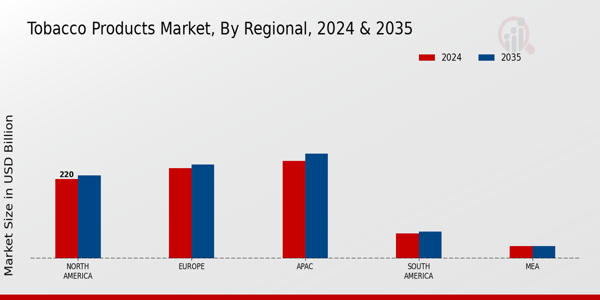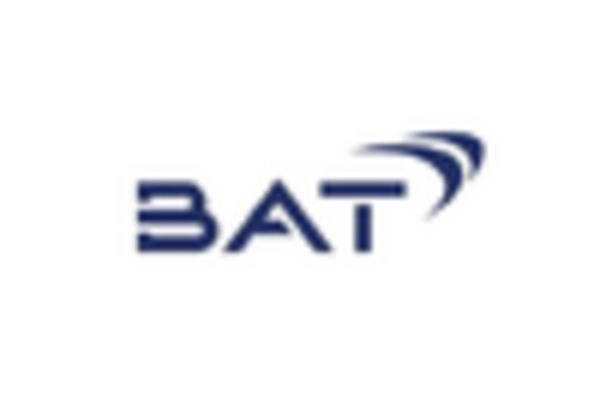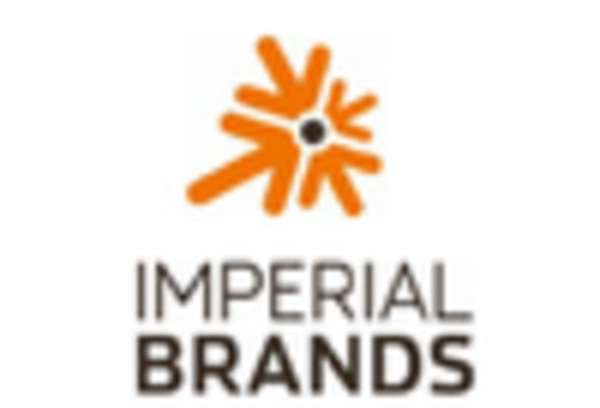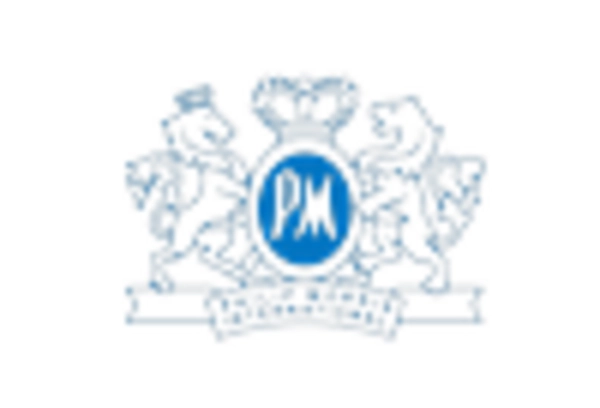Innovation in Product Offerings
The Global Tobacco Products Industry is witnessing a notable shift towards innovation, particularly in the development of reduced-risk products. Companies are increasingly investing in research and development to create alternatives such as e-cigarettes and heated tobacco products. This trend is driven by consumer demand for less harmful options, which has led to a significant increase in the market share of these products. For instance, the market for e-cigarettes has expanded rapidly, with estimates suggesting it could reach a valuation of several billion dollars in the coming years. This innovation not only caters to health-conscious consumers but also aligns with regulatory trends favoring reduced-harm products, thereby reshaping the competitive landscape of the industry.
Regulatory Landscape and Compliance
The regulatory environment surrounding The Global Tobacco Products Industry is becoming increasingly stringent. Governments worldwide are implementing comprehensive tobacco control measures, including advertising restrictions, plain packaging, and higher taxes on tobacco products. These regulations aim to reduce tobacco consumption and protect public health. For example, countries that have adopted strict regulations have observed a decline in traditional cigarette sales, prompting manufacturers to adapt their strategies. Compliance with these regulations is essential for companies to maintain market access and avoid penalties. As a result, the industry is likely to see a shift towards compliance-driven innovation, with firms focusing on developing products that meet regulatory standards while appealing to consumers.
Emerging Markets and Economic Growth
The Global Tobacco Products Industry is experiencing growth in emerging markets, where rising disposable incomes and changing lifestyles are contributing to increased tobacco consumption. Countries in Asia and Africa are particularly noteworthy, as they present significant opportunities for market expansion. For instance, the tobacco market in Asia is projected to grow at a compound annual growth rate (CAGR) of over 4% in the next few years. This growth is fueled by urbanization and the adoption of Western consumption patterns. However, it is essential to note that this expansion may also attract regulatory scrutiny, as governments seek to balance economic growth with public health concerns.
Technological Advancements in Production
Technological advancements are playing a crucial role in shaping The Global Tobacco Products Industry. Innovations in production processes, such as automation and data analytics, are enhancing efficiency and reducing costs for manufacturers. These technologies enable companies to optimize their supply chains and improve product quality, which is increasingly important in a competitive market. Furthermore, advancements in packaging technology are also contributing to the appeal of tobacco products, as they enhance product safety and shelf life. As manufacturers adopt these technologies, they may gain a competitive edge, allowing them to respond more effectively to consumer preferences and regulatory demands.
Changing Consumer Preferences and Health Awareness
The Global Tobacco Products Industry is significantly influenced by changing consumer preferences, particularly as health awareness continues to rise. Consumers are increasingly seeking alternatives to traditional tobacco products, driven by a growing understanding of the health risks associated with smoking. This shift is evident in the rising popularity of nicotine replacement therapies and vaping products, which are perceived as less harmful. Market data indicates that the sales of e-cigarettes have surged, reflecting a broader trend towards health-conscious consumption. As consumers become more discerning, tobacco companies are compelled to adapt their product offerings to align with these preferences, potentially reshaping the market landscape.


















Leave a Comment